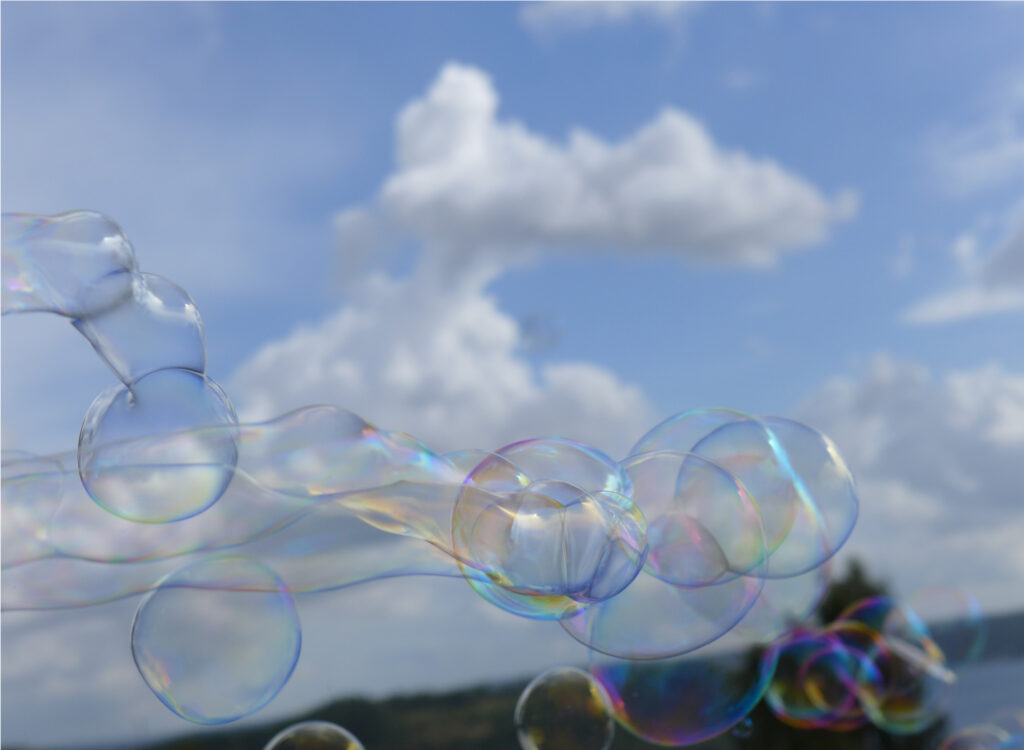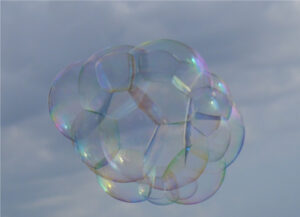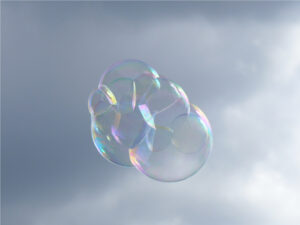
Tinted in purple and blue, the bubbles float away through the air, upwards for a while, then sinking until they meet the ground or the foliage, disintegrating. Bubble after bubble flows out of the bubble wand, which is forming long sausages by the flow of air, soon pinching off into bubbles.
Each bubble is a thin sphere of water molecules. A layer of soap and water so thin that light waves reflected from the inner and outer surfaces will interfere, tinting the bubble in shimmering colours – pink and lime green, blueish, yellow and more.
The attraction of the water molecules, its surface tension, will cause the bubble to contract and become smaller. But as it becomes smaller, the pressure inside the bubble increases above the air pressure outside, counteracting the contraction. In a twinkle of an eye, the forces balance and the soap bubble floats away, as steady as ever.

Single bubbles form a simple sphere, but as the bubbles merge with each other it becomes more complicated. If a soap bubble bumps into another, a small wall connects the two. As more bubbles join in, a small cluster forms.
The bubbles take the shapes of the smallest possible surface that balances the forces, minimum surfaces, a problem investigated by the Belgian physicist Joseph Plateau (1801-1883). In the 19th century he made experiments with soap bubbles, and described the rules they will spontaneously follow.
Complex as the bubbles may seem, they exhibit a surprising simplicity, with smooth even surfaces. To form an edge, three sides always meet, making equal angles (120°) to each other. At each corner four edges always meet, making the same angles as a tetrahedron. Soap surfaces meeting at other angles will realign to form a stable structure, so when a bubble in a cluster bursts, the others will rearrange themselves, to find a new stable configuration according to the rules.

As easy as the rules are to describe, as difficult they have been to prove mathematically. It would take almost a century before they could be proven, in 1976, by the American mathematician Jean Ellen Taylor (1944-). Still the bubbles guard many of their secrets, the exact curvature of the walls still being a matter of conjecture.
I look up from the bubble wand and follow the trail of bubbles again. Simple and elegant, yet subtly elusive, the bubbles float into the sky.